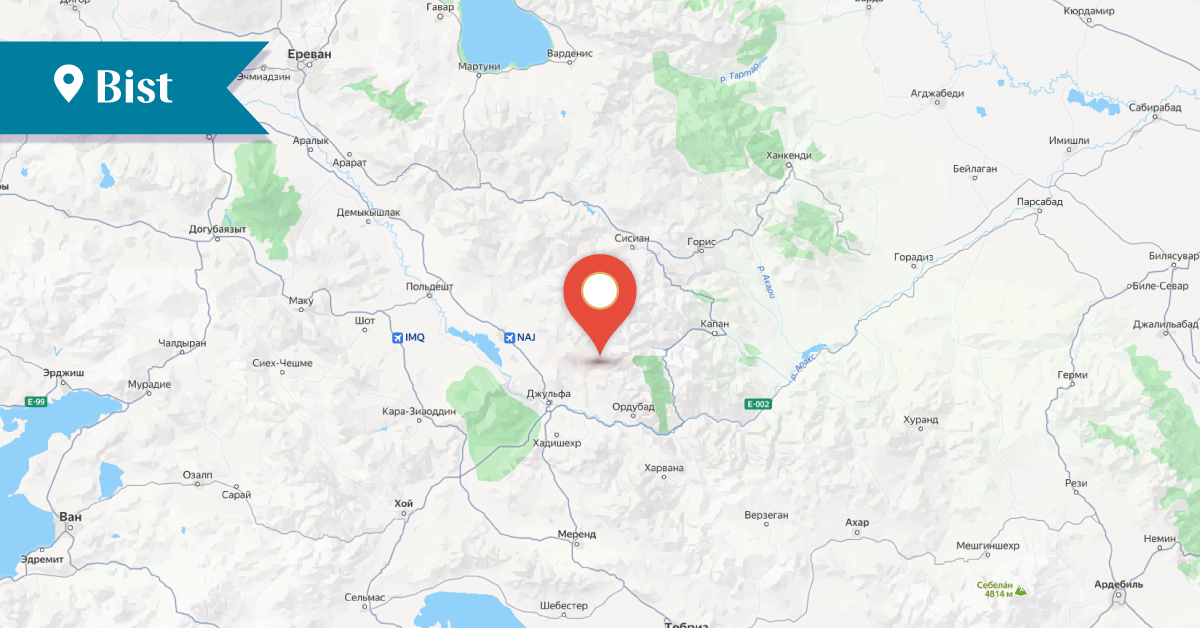2025
2025
2025-06-25

Catholicos of All Armenians Abraham III of Crete (1734–1737), in his Chronicle[1] recounts the visit to the village of Bist/Bust in Nakhijevan. He visited the large church of Bust and ascended to the “dove-like monastery,” situated on an elevated site surrounded by irrigated gardens, fertile lands, and healthy air. There he rested, forgetting the hardships of the journey. Abraham III was hosted for two days by the local prelate, Petros vardapet, whom he described as a wise and virtuous man.
Ghevond Alishan wrote that about 100 Armenian families lived in the village. The village was the birthplace of Ghukas Bstetsi and vardapet Hakob Bstetsi, a disciple of Hovhan Vorotnetsi[2] and Grigor Tatevatsi.[3] Grigor Tatevatsi mentioned Hakob Bstetsi in his manuscript "The Book of Sermons of Grigor Tatevatsi", written in 1407. [4] According to manuscripts copied between the 14th and 17th centuries, the village of Bist was home to the Monastery of Surb Nshan, the Monastery of the Holy Mother of God, and the Church of Surb Sargis.
Abraham of Crete described the Church of the Holy Mother of God in Bist as a “noble and great church,” which was last renovated in 1877 thanks to the efforts of the local Armenian population and later was destroyed by Azerbaijani authorities. It is important to note that the Church of the Holy Mother of God in Bist was the largest architectural monument of its kind in the Nakhijevan region. The “dove-like monastery, like paradise” (adinasaras) mentioned by Abraham of Crete was the Monastery of Surb Nshan, where numerous Armenian manuscripts were copied, including several preserved in the Matenadaran in Yerevan, such as originals of Gospel (nos. 6257 and 6531) and Lectionary (no. 7481).
This picturesque village, now known as Bist[5], is administratively part of the Ordubad district of Nakhijevan. The existing assumptions about the meaning of the name indicate its Iranian origin and have no connection to the Turkic language. In modern Persian, bist means “twenty,” and according to one version, the village was founded by twenty families. The village was also mentioned as Bust, and according to another version, it derives from the Persian word meaning “garden.”
The last Armenian inhabitants of Bist were deported by Azerbaijan in 1989. Of the village’s once-rich cultural heritage, only two bridges have survived. The first bridge, built during the reign of Shah Abbas I and dating to the 17th century, spans the Giran River. The second, constructed at a later period, crosses the Mesropavan River.
Bibliography
Ghevond Alishan, Sisakan, Venice, 1893
A. Ayvazyan, The Epigraphic Heritage of Nakhijevan, Vol. III, Goghtn District, 2007.
The Colophons of the Armenian Manuscripts, Part 1, Yerevan, 1955
[1] Abraham of Crete, The Chronicle of Abraham of Crete, 1870, p. 78.
[2] 14th-century Armenian theologian, philosopher, and educator, founder of the University of Tatev.
[3] 14th-century Armenian theologian and philosopher, disciple of Hovhan Vorotnetsi.
[4] The Colophons of the Armenian Manuscripts, Part 1, Yerevan, 1955.
[5] Bist, Azerbaijani - Bist.